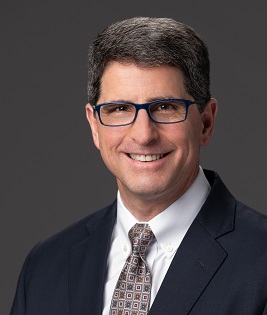Turan Erdogan
Turan Erdogan

Profile
Turan Erdogan has been studying, teaching, and practicing optics for 40 years. He is currently President of Plymouth Grating Laboratory, Inc. (PGL) in Carver, MA, the leading commercial supplier of diffraction gratings for pulse compression of ultrahigh-intensity lasers, for high-energy-laser spectral beam combining, and for other laser applications. Prior to joining PGL in 2016, Erdogan was the Site Leader of Melles Griot in Rochester, New York, a leading provider of high-performance lens assemblies and optical systems for biological imaging, semiconductor metrology, and other applications. He also served from 2011 to 2016 as the CTO and Vice President of Business Development for the IDEX Optics & Photonics platform.
In 2000, Erdogan co-founded Semrock, Inc., which was acquired by IDEX in 2008. Semrock revolutionized the manufacturing of high-performance thin-film optical filters for fluorescence imaging and detection and Raman spectroscopy applications. Prior to Semrock, he was a tenured professor at The Institute of Optics of the University of Rochester, where he joined in 1994. There, he conducted research on fiber and waveguide devices and holographic optical materials. He taught courses offered to freshman through advanced graduate students and supervised both undergraduate and graduate research associates, graduating a number of Ph.D. students who have gone on to make their own marks in the world of optics. He also consulted with numerous companies around the world on Wavelength Division Multiplexed (WDM) fiber-optic communications components and devices.
From 1992 to 1994, Erdogan was a post-doctoral researcher at Bell Laboratories, then part of AT&T. There, he developed numerous applications of fiber Bragg grating technology for precise wavelength control in DWDM communications systems and conducted research on the physics of ultraviolet photosensitivity in germanium-doped silica optical fibers, planar waveguides, and bulk glasses. He has a PhD from The Institute of Optics at the University of Rochester and BS degrees in Electrical Engineering and in Physics from the Massachusetts Institute of Technology. He has authored or co-authored over 50 peer-reviewed scientific publications and over 50 major conference talks, and holds more than 30 issued patents, with more than half of these covering optical devices in mass production today.
Erdogan has served as Program and General Chair of several major Optica (formerly OSA) conferences, including the FiO-LS Conference, the Optical Fiber Communications (OFC) Conference, and the Bragg Gratings, Photosensitivity, and Poling in Glass Waveguides Topical Meeting. He has also served on a number of other conference organizing committees, the Rochester Section of the OSA, several Optica awards committees, several Optica councils, and the Optica (formerly OSA) Board of Directors.
He was awarded Optica’s David Richardson Medal, the Adolph Lomb Medal of the Optical Society of America, an Alfred P. Sloan Research Fellowship in Physics, and a National Science Foundation Faculty Early Career Development Award. In addition, he was named a Fellow of the Optical Society of America in 1999. He lives on Cape Cod, Massachusetts, with his wife and has four grown children.
Election Statement
Optica is a community. For some, the experience is so intimate it might even be considered a family. The health of a community—or a family—is determined at least in part by the health of its individual members. But I believe it’s more than that. The community itself can be strong or weak, vibrant or flaccid, alive or dead. And surely its health is also indicated by its external impact. Strong communities make a difference to people outside of the community.
I am excited to play a part in continuously improving the health of the Optica community. But how can we tell whether our health is improving or not? Peter Drucker said, “If you can’t measure it, you can’t improve it.” In optics, our minds immediately go to the frustration we would feel trying to polish a lens or mirror without a good test plate or Fizeau interferometer.
Measuring the health of a business is straightforward. Financial metrics rule. You’ve got to see growth of both the top line (revenue) and the bottom line (profit). Growth of revenue without profit is useless. And growth of profit without revenue is almost never sustainable.
But what about measuring the health of Optica? What metrics should we focus on? For a community like ours, I believe our membership count is like revenue, and the impact we have is like profit. Just as revenue growth is a no-brainer for businesses, so is membership growth for Optica. If we’re not adding to our numbers, we’re probably not as healthy as we should be.
Impact, or the bottom line, is a little more subtle. Impact should be measurable for each of the three beneficiaries of a healthy community listed above: its individual members, the community itself and people outside the community.
Are Optica members truly benefiting from Optica? Are their careers advancing more rapidly? Are they learning new things and being inspired to develop, invent and create new ideas, theories or products?
How about the community itself? Are we connecting more globally than ever before? Are we growing more intimate? Are we blurring the lines that seem to be naturally drawn by geographic borders, gender and professional affiliation—or even making them transparent?
Finally, how is Optica impacting society outside of our community? Are we making it easier for great science to be done that will benefit people for generations to come? Are we facilitating the creation of great companies and helping established companies to thrive?
I am eager to work with Optica leaders, staff and members to refine the metrics for improving the health of our society. Having served on Optica’s Board of Directors, several councils including OIDA, several awards committees and several conference committees, and having co-chaired a number of Optica conferences, including FiO–LS and OFC, I believe I have the experience to find new and more effective ways to review and assess these metrics, and to set the right priorities which enable us to act on what we’ve learned.
Document Created: 01 January 0001
Last Updated: 01 January 0001
